Matsutake, just like other expensive, often rare ingredients, (cliché examples being foie gras, truffles, caviar, etc) can be confusing. We assume an amazing experience with the price tag.
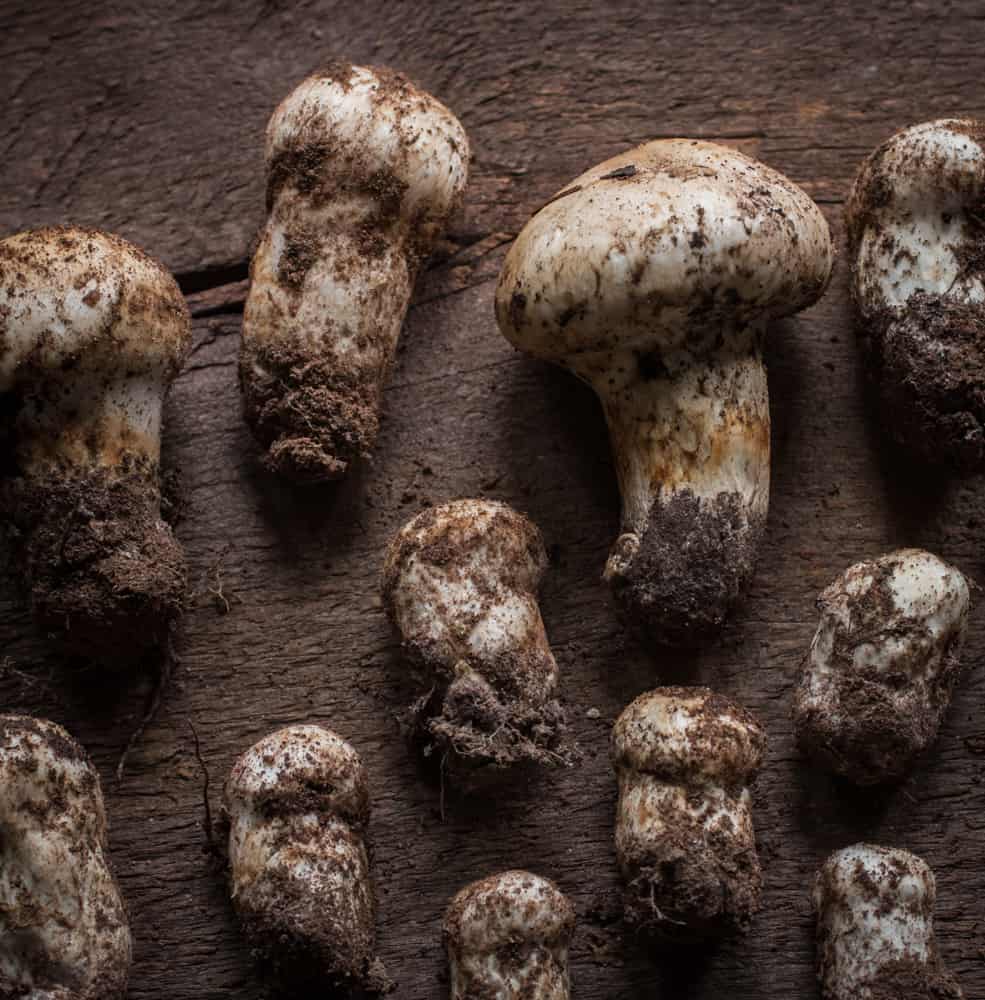
But, If you serve them to someone who was blindfolded and who had no idea what they were, or the history surrounding them, you might get reactions like: "that tastes greasy" (foie) "that tastes like a mushroom" (truffles) or "that tastes fishy" (caviar). Matsutake are different. but I didn't understand how much until recently.
I'd been waiting, planning all year for the 2018 matsies to come to Minnesota, checking my foraging journal and cross-referencing the fruiting patterns of other species to get a timeline-each year is different.
When they finally started to show, I grabbed a few from the early patch and made something I've been meaning to try for years: matsutake gohan using rice from Milwaukee.
It was great, absolutely something I'd put in the roster of dishes to make every year. But, I wanted more. I was expecting their flavor to be more pure and forward. I wanted people to taste what I smell when I pull them out of the ground, cut a stem and breathe in their scent, which is so hard to convey.
I've been cooking with Pacific Northwest matsutake for years-long before I picked them in the Midwest. The flavor of is hard to desrcibe and I always noticed it dwindled the longer they were kept in the cooler, just like truffles.
But, when I cut the stem off of my first freshly picked one and put it to my nose, the smell was even stronger than the ones I'd worked with that were purchased, it's that aggressive aroma that people have compared to red hots or cinnamon. I like to think it's more essence of pine, but the cinnamon can be there too sometimes.
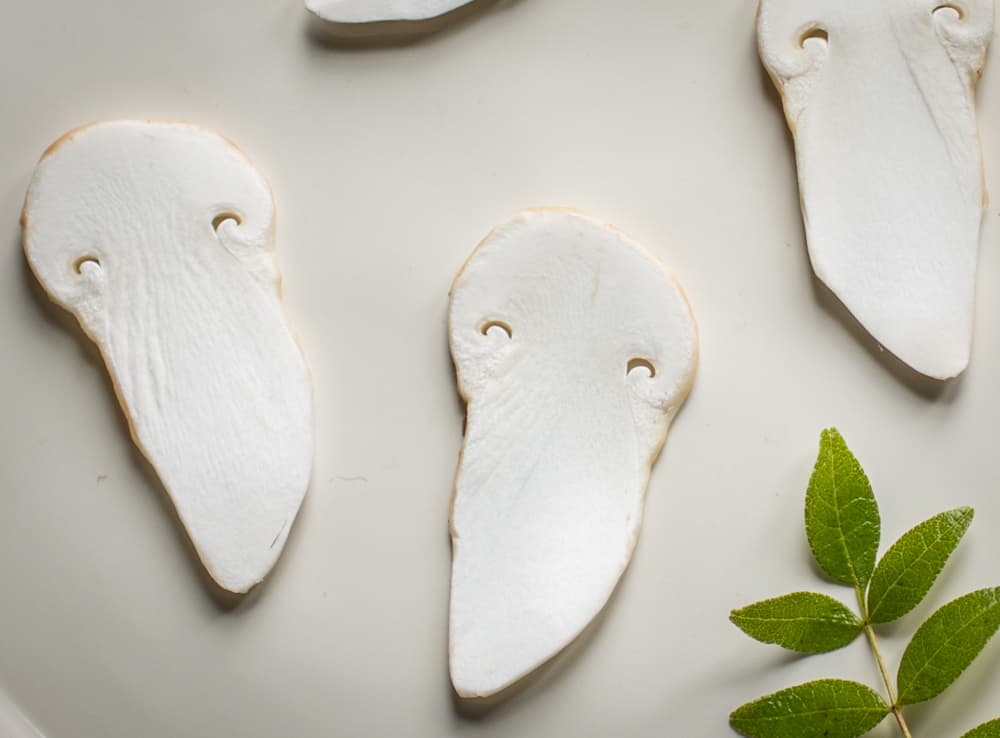
Taking notes from Faviken, and Japan
With a couple fresh matsutake in my fridge, I remembered one of my books had a section on tasting them: Faviken. I gave it a second read before I got to work. Just like me, Magnus was accustomed to other mushrooms in the area, but was introduced to matsutake by a talented local hunter.
His tasting notes were vivid, and it felt like I was in the room with him and the other cooks. It's one of those reads you need to look at a couple times to really pick out the fine details that slip through at first.
Between the lines, what stuck out to me was that the first cook to prepare the mushroom for the staff cooked it whole and served it medium-rare (a technique that could be applied to porcini too).
Personally cooking a new-to-me mushroom medium-rare is something I will likely never do because gastro-intestinal issues suck and they can vary in intensity from person to person. Obviously Magnus knows what he's doing though, I assume he knew they could be eaten undercooked.
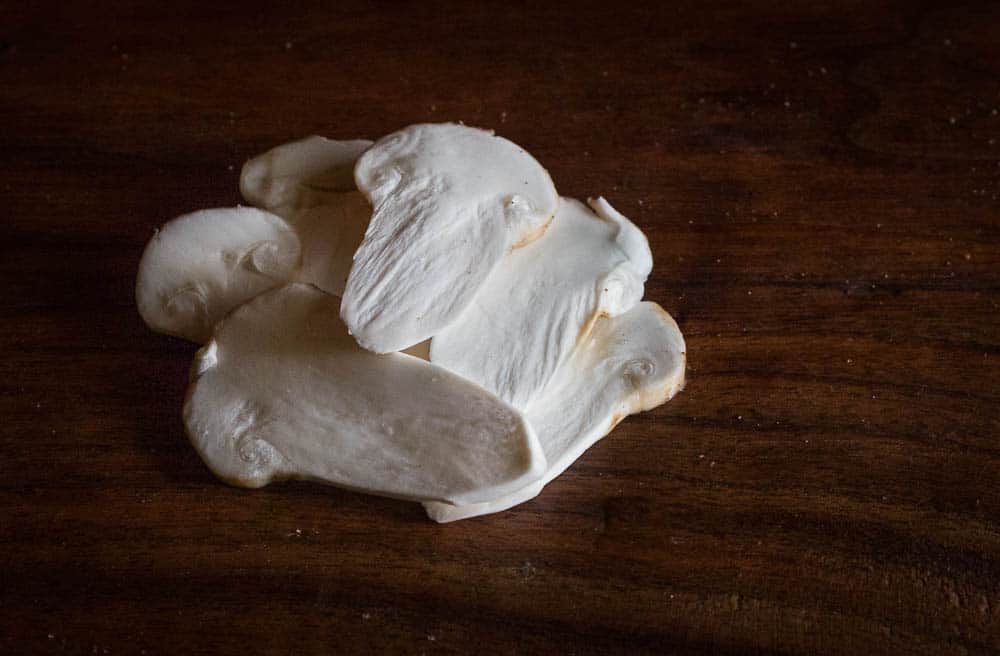
Some mushrooms have to be very well-cooked to be edible: blewits, honey mushrooms, morels, etc. For some reason, I didn't ever think to research if matsies could be eaten raw, but somewhere along the line I saw pictures of a Japanese chef serving them raw, and I squirreled it away to remember sometime down the line.
Well, after eating them raw a number of times in various quantities, and then serving to others, I can tell you that matsutake (at least the ones I'm picking) are definitely among the wild mushrooms you can eat raw, taking a place of honor alongside porcini, beefsteak and Caesar's mushroom, to name a few well-known others.
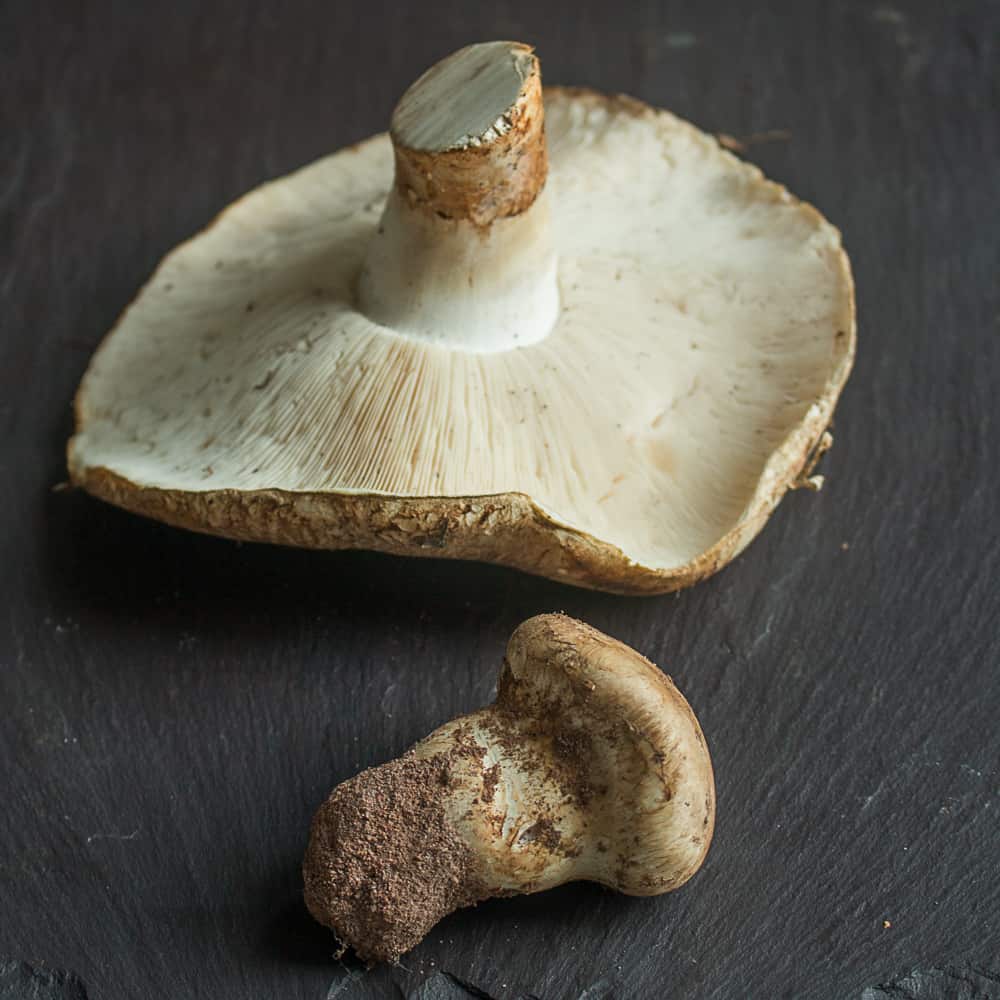
Raw?
Eating raw mushrooms can be a novelty, and a subject that can make a person dodge a tomato or two online-it's a hotly debated topic for reasons I won't get into. Raw porcini can be great, but Midwest species are often to buggy unless you get them at the perfect moment.
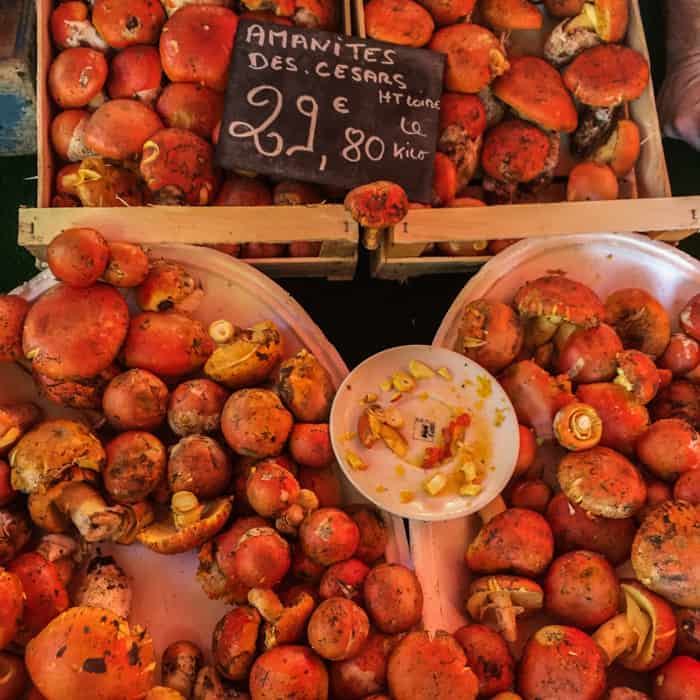
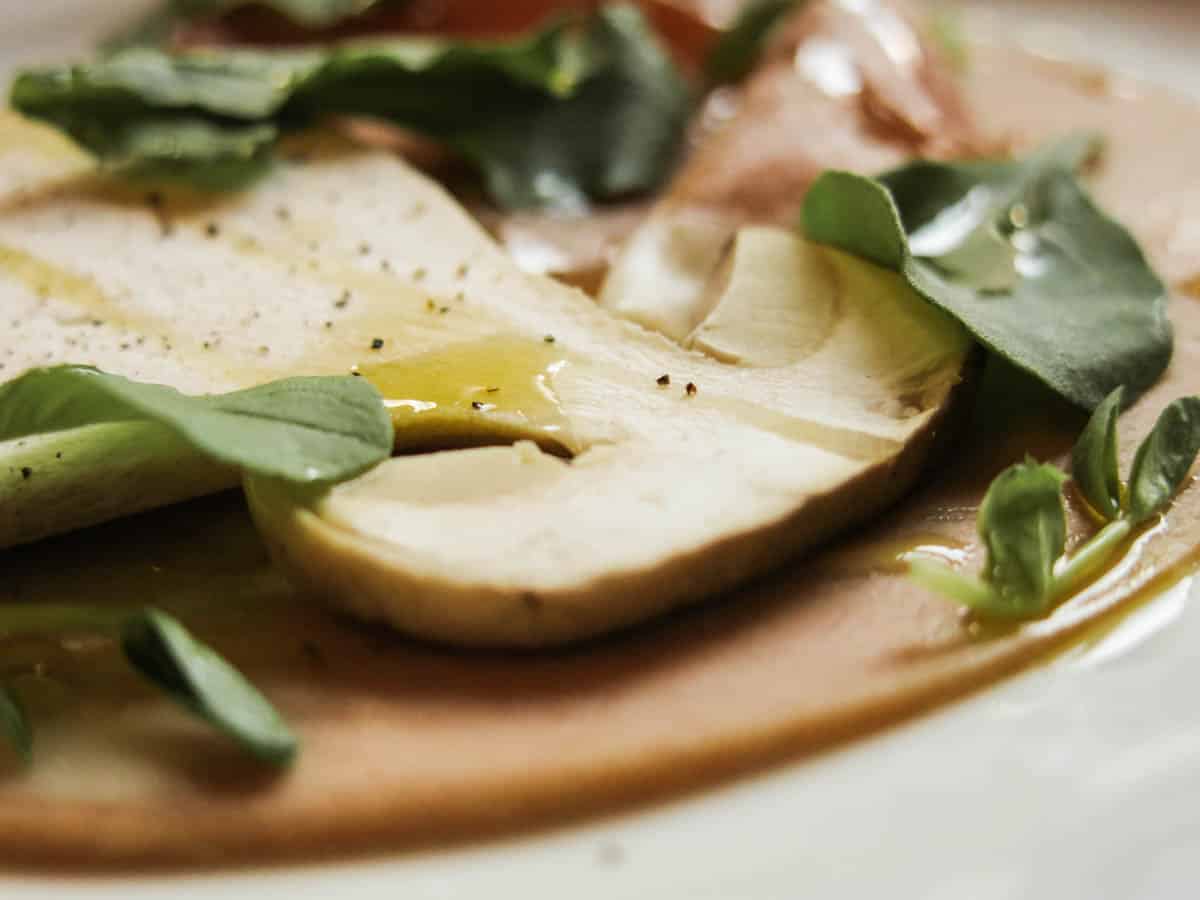
Caesar's mushroom is good too, and I ate them raw in Provence, but it's American cousin (A. jacksonii and friends) doesn't grow in Minnesota or Wisconsin where I usually hunt.
Also, typically mushroom flavors benefit from browning, caramelizing, dehydrating, toasting, etc: basically the same tricks I use to coax flavor from meat, so I was really skeptical. Sure people eat matsies raw, but how good could they actually taste?
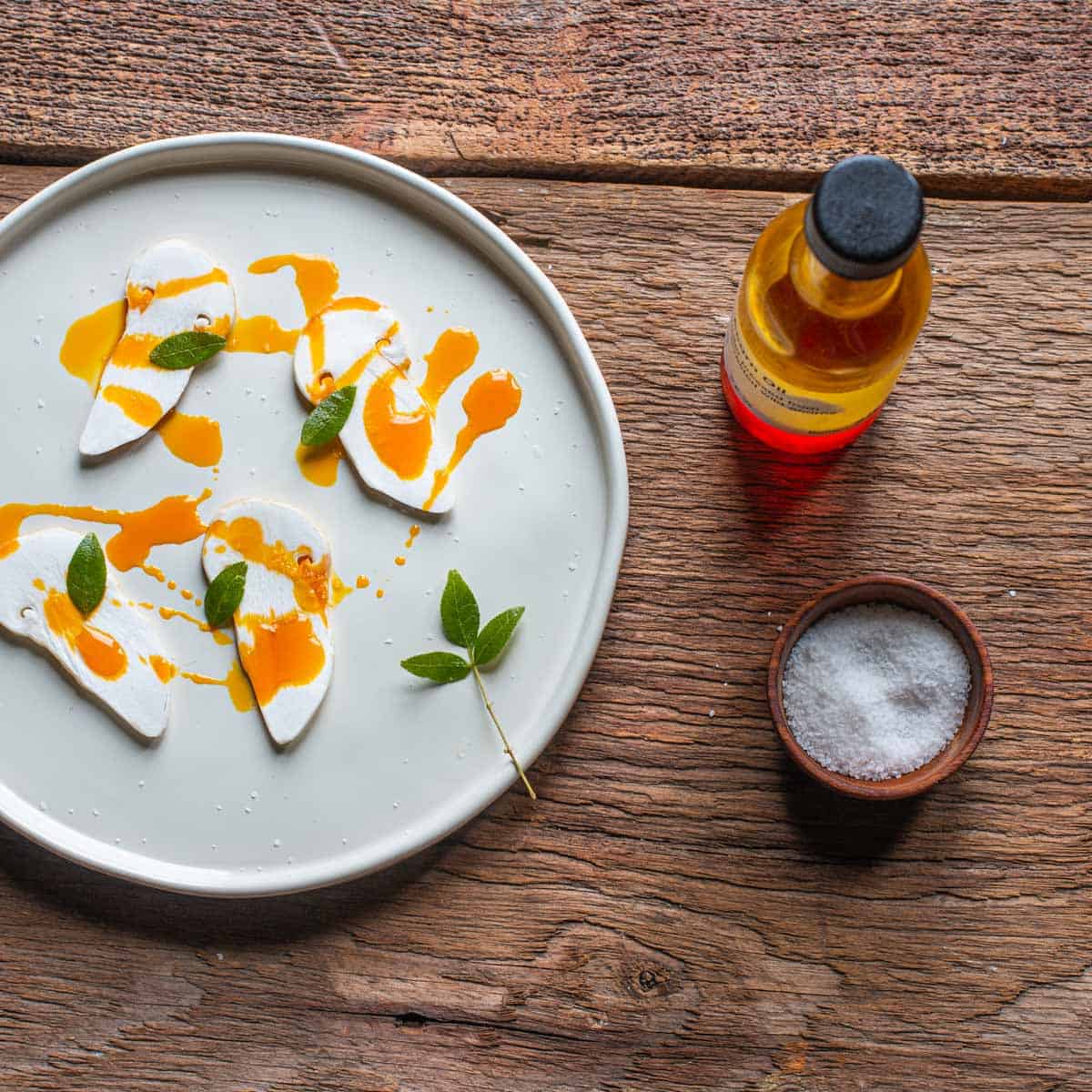
If you hunt matsutake, eat some raw, at least once.
3 or so days after a hunt, I took a matsie button, brushed it clean, peeled the stem and sliced it thin with a little crunchy salt to help the flavor. Just one slice with a little salt, was, incredible.
It starts out simple enough with a flavor like raw mushrooms. As you chew, you can almost count to three, and then, BOOM! The true aroma of the matsutake, the aroma you smell when you pull one fresh from the needle duff, with every ounce of the pine and funk, seems to invades your sinuses ad infinitum as you continue to chew.
It was almost comical how strong the aroma was, and honestly, it shamed all other mushrooms I've eaten raw with the intensity. Raw matsutake is absolutely on par with truffles, if a little less fragrant whole, and without the ability to flavor something just from the two being in close vicinity. It's really something everyone who loves mushrooms should have on their bucket list to try.
Composing a dish with Midwestern flavors
I put my raw matsies together with a few very special things. As a nod to Japan's love for the mushroom, a few leaves of my favorite type of Szechaun peppercorn leaf that I'd preserved in brine (they keep their flavor very well) some of Sam Thayer's ridiculously good oil pressed from red acorns (they produce a red oil, there is no unnatural coloring) and, crunchy maldon salt.
It was worthy of any 3-star michelin restaurant I've eaten at, and a study in how to get more from less.
Tasting Tips
- Choose firm matsutake as fresh as possible. Held under refrigeration they be edible for 2 weeks or more with regular attention, but their flavor will wilt after a few days, and then you might as well eat a sliced button mushroom from the Old Country Buffet salad bar.
- When cleaning them for eating raw, I peel the stem with a Kuhn Rikon peeler, then gently scrub or peel the cap as well if needed. The veil that surrounds the mushroom gets a bit slippery when wet (I often wash matsutake since they can be covered in dirt since they grow underneath the pine duff).
- For eating, slice thin, shave with a peeler, or for a stronger punch, pull them apart like string cheese like they do in Japan.
- It's important to have oil with a preparation like this, as much for balancing the power of their aroma as allowing salt to adhere to the mushrooms themselves.
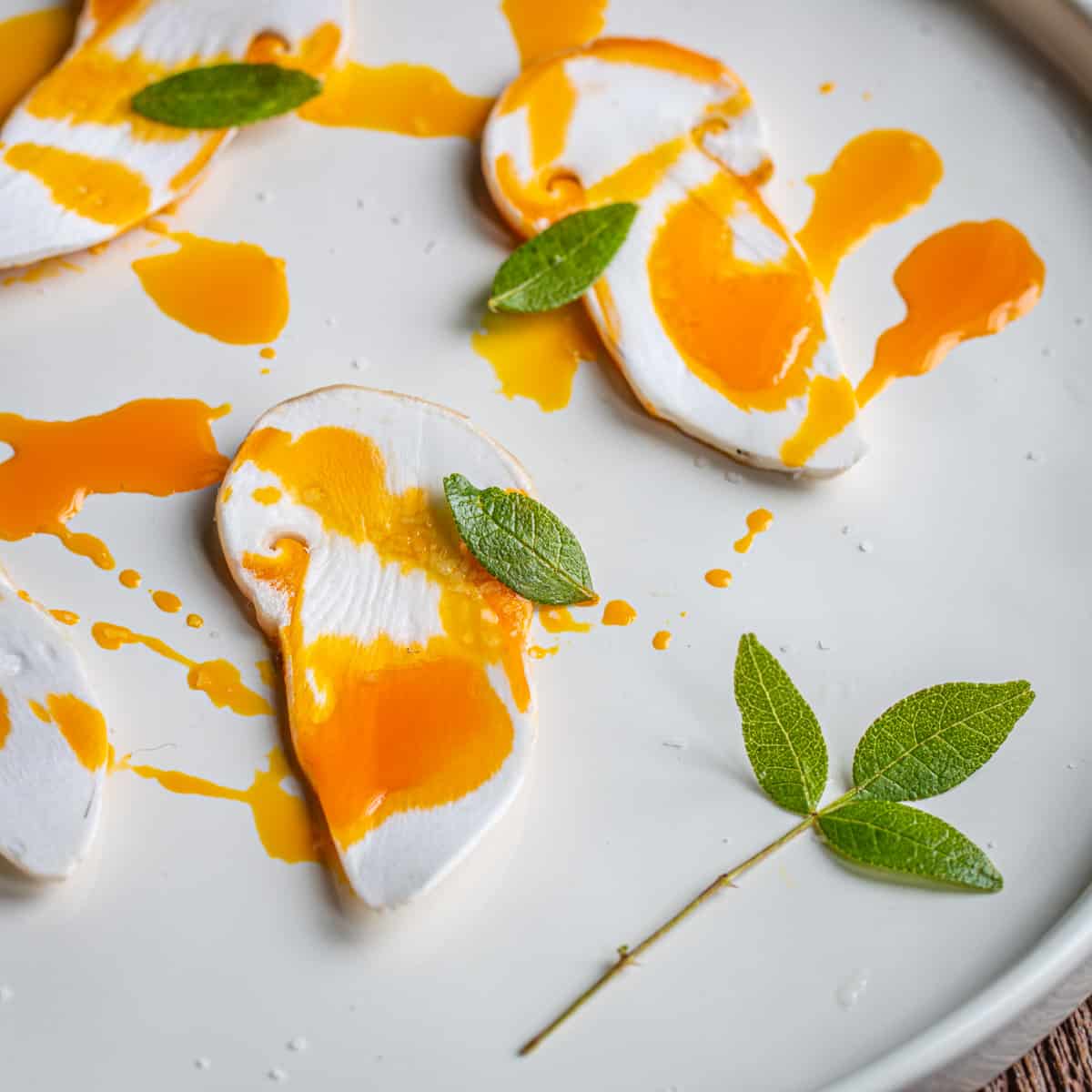

Barbara Frank
Thank you we live in BC Canada. Finding lots this year. I always fry them with water then add a pinch of salt as the water cooks out
. I freeze or eat right away use in a pho soup. Rice. I just tried a small piece raw with olive oil and salt. Pretty darn good 👍🏻
Alan Bergo
Thanks Barbara, they're such a special mushroom aren't they?
Keith Ikeda-Barry
We're very lucky that it has been a great matsutake season on the West Coast (2024). On your suggestion, we just tried a fresh little button raw for the first time. We sliced it very thinly and drizzled a little neutral olive oil and very good salt.
Absolutely amazing.
The texture is unique, with the first mouthful initially suggesting a possible challenge, but it quickly breaks down smoothly with a satisfying chew.
The aroma is there from the start, but REALLY turns on after 5-10 seconds, flooding the mouth and nose with that deep spicy pine character. After that, it's almost comically delicious - outrageous yet balanced, elegant yet heady. It felt like our humble kitchen was being visited by royalty. We paired it with a minerally Cava, and honestly just stared at each other, eyes wide in amazed appreciation, scrambling for words to express our delight.
What an awesome experience.
Grateful for the suggestion!
Alan Bergo
Hey thanks Keith. People don't really understand how much of an experience eating them like this is until they try it. I'm so glad you gave it a shot.
jr vild
Hi! Rgds from Portugal from a Finnish guy. The season just began in here, a few fully opened matsutakes, nearby under earth the small intact ones. I ll go back in two days...
I bought a local fine mushroom book - no matsutake nor cogumelos dos pinheiros japoneses, japanese pine mushrooms. My place is along public path, but they are all mine. Maybe 30 kg last year, the area is only a large block of flats yard.I am sure there is much more in the woods... but i am already giving them out left and right. Approached a couple of japanese restaurants...to no avail.
I was wondering if drying is a good idea. The aroma must be gone with the wind. I'll try it at the moment, since that is what I do with finnish porcinis and fly them down here for winter.
Came here to find some recipes, I guess this is the right place. BTW the large matsutake caps needs boiling in order to get rid of bitterness. Not so with the foot. This is normal procedure in Finland with lamelled mushrooms like milkcaps. To qoute a portugese guy, the cap is like meat and foot like mussel...
JR
Alan Bergo
Thanks jr, I've never noticed bitterness in the mature matsutake I pick. You might try freezing some raw wrapped in foil like David Arora recommends, I haven't tried it.
Wild Wally
I slice the caps and stems across their whole lengh about 1/8 inch wide and then dry them in a dehydrater until they get hard and leathery or put them in the smoker with ordinary wood chips and dry them that way. I do this mainly to the older bigger pines because the chips are larger and longer.
They make great snackable chips, better than Lays potatoe chips.
Alan Bergo
Great idea Wally
Debbie Viess
This sounds lovely. I don't eat many raw mushrooms, but might just try these, next time I find one of our western matsies!
lenny
I ate them raw with soy souse for many years. There are a lot of them in New england
Sam Schaperow
Great post. I have yet to try a matsie, but if I ever can I will want to try it raw as well. Another that is excellent raw is the truffle scented marasmius (name not precise, as I forget it's name).
Rodger K. HAmilton
We hear these grow )in Vermont) on south-facing hillsides with deep hemlock duff, near stream. We have not found them... yet. Can't wait to discover them! Thanks for the tips. I f we ever get the chance to try them, it will be as you suggested!
Ola
I just found some in VT!